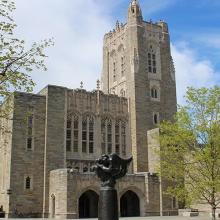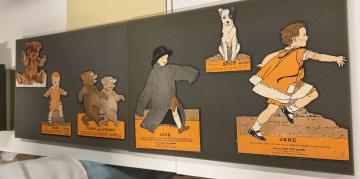By Meghan Bryant, Frances Lightfoot Robb Head of Special Collections Public Services & Instruction

This summer I had the privilege of traveling to Princeton University to attend a week-long Rare Book School course, “Print for Children,” which explored various forms of print materials created for children from about the 15th century onward. My own research includes explorations of material culture that targeted and invited child consumers to collect or engage with various kinds of ephemera, so this course had personal interest for me. Professionally, it was particularly worthwhile, as the Special Collections Research Center has many books, games, and materials that were produced for children and many that were created by kids, so this course allowed me to learn more about the history and context of print for children.
Dr. Andrea Immel (Cotsen Children’s Library) and Jill Shefrin (University of Toronto) taught the course and I was one of 12 students in the class. Our course took place in Princeton’s Firestone Library and we had the luxury of being able to see highlights from the Cotsen’s extensive collections. Among some of the materials we got to see and learn with were a book of hours with a primer inside, handcut jigsaw puzzles, early Chinese texts about childhood morality, “hieroglyphic lessons,” board games, and a large Peter Rabbit three-dimensional figurine.

We learned a dizzying amount of information each day and got to see many items from the collections; it was truly thrilling.
Highlights of the experience (aside from being able to see all the incredible materials the instructors shared with us) included morning coffee from Small World Coffee, walking the beautiful Princeton campus and surrounding neighborhoods, tacos from Tacoria, and meeting new friends from across the country.
Lastly, for any parents of young children who haven’t visited Princeton, I say to you: Go visit the Cotsen! Their library is incredible, with spaces for children to wander through that look like scenes from canonical children’s works. Even adults can’t help but say “wow!” when they walk in. It’s a magical place.

